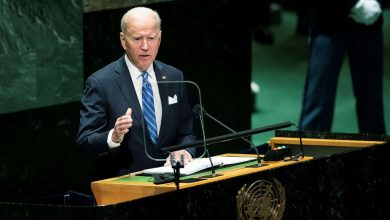The United States leads in many sectors but lags behind in green energy utilization. Ranking 2nd globally for total carbon dioxide emissions, it’s evident more work is needed to achieve the ambitious goal of a carbon pollution-free power sector by 2035 and net-zero emissions by 2050, as set by the White House.
- Progress and Challenges
- Climate Change and the Paris Agreement
- Green Energy Developments
- Advantages and Limitations
- Why is There a Pushback to Clean Energy Projects?
- Will the United States Hit the Deadline?
Progress and Challenges
Between 2013 and 2023, the United States’ use of renewable energy has seen a significant increase. There was a 2.6-fold increase in wind power usage and a 12-fold increase in solar power usage, according to Environment America.

From 2022 to 2023, there was a 55 percent increase in the use of solar energy. However, while those numbers are still going up, the rate of increase has begun to slow.
Challenges like construction halts, ordinances, and other hindrances at the county level are impeding the construction of wind and solar farms. This is concerning, given the significant number of green energy power plants required to meet renewable energy targets and mitigate the effects of climate change.
Climate Change and the Paris Agreement
To prevent the climate change crisis from escalating, there needs to be an immediate and significant change in how energy is produced. This energy transition must happen by 2050 to avoid the worst effects of climate change.
Carbon emissions need to reach a point called “Net Zero“. This term means that carbon emissions released into the atmosphere are not greater than the carbon emissions removed from the atmosphere.

The Paris Agreement of 2015 outlines the goals set forth by the United Nations to provide solutions to prevent a climate crisis and spearhead the energy revolution, including significantly reducing emissions by 2025 and limiting global temperature rises to less than 1.5 degrees Celsius.
If the global temperature rises more than 1.5-2 degrees Celsius, the results could be devastating. This increase could result in severe natural disasters, heat waves, and dramatic weather pattern changes. Moreover, mining nonrenewable energy resources is damaging to the environment in other ways as well.
The Paris Agreement also details that all participating countries will update on the progress every five years, as well as assist other countries in efforts to reduce emissions. According to the United Nations, “To limit global warming to 1.5°C, greenhouse gas emissions must peak before 2025 at the latest and decline 43% by 2030.”
On a country, state, and county level, this means that wind and solar farms must exponentially increase across the United States, especially in areas like Kansas with high winds and places like California with high solar energy potential.
The renewable to nonrenewable energy ratio must keep increasing, but the increase must be faster. Renewable energy resources are as plentiful as sunlight and wind.
Green Energy Developments
There have been great strides regarding the science of renewable energy technologies. The dramatic increase in the use of solar energy in the past few years is attributed to improved solar energy collection and storage technologies.
Renewable energy in the United States currently accounts for approximately 13 percent of total energy production. Nearly 80 percent is from fossil fuels, and about 8 percent is from nuclear energy.
Projections for future clean energy production are about 45 percent by 2030 and 55 percent by 2035. The percentages for these energy sources are well below the goals for that period.

Growth and use of green energy are at an all-time high. Use is up 90% from the turn of the century, and increasing every year. However, the record rates of growth are beginning to stall due to the problems with building clean energy power plants on county levels. USA Today reports that at least 15% of counties in the U.S. are actively stalling the progress.
USA Today also reports that for all the counties successfully implementing clean energy projects, there are double the number of counties preventing wind, solar, and other renewable power sources from being utilized.
The implications of these stalls are the failure to build energy-efficient power generation plants in the most feasible areas, like wind farms on the plains and solar farms in high-sun areas.
Advantages and Limitations
There are benefits and limitations to consider when implementing any sort of change, and the shift to clean energy is no different.
The main hurdle to clean energy growth is that the effectiveness of green energy power plants can be heavily dependent on weather and climate conditions. Lack of sunlight and wind can affect the power generation capability of solar and wind power plants respectively. Another big limitation is the cost of building renewable energy farms in the United States.
However, the advantages, including benefits to the environment, reduced reliance on imported fossil fuels, and lower power costs far outweigh the few limitations we might face.
The biggest benefit is the reduction of carbon emissions and greenhouse gas emissions, which in turn will improve the environment and public health as a result.
Energy consumption from renewable energy sources leaves up to 100% less of a carbon footprint than fossil fuels. It also will lower the cost of energy for consumers, as once the farms are working at full capacity these become cheaper to run than fossil fuel power plants.
Why is There a Pushback to Clean Energy Projects?
While many community-led clean energy projects are successful, there are just as many or more that are getting stalled at the county level. 15% of U.S. counties have slowed, blocked, or outright banned solar and other renewable energy plants.
A wave of misinformation contributes to the hesitancy regarding new clean energy projects. Offshore wind farms in the Atlantic Ocean received much backlash recently because of rumors that the turbines were killing endangered whales. Even though these rumors are untrue, they still affect public opinion and legislation, which hinders wind and solar energy development and the clean energy transition.
Legislation regarding size and area also hinders clean energy plant setups. For example, many counties have a maximum size for new construction, or it is banned to take up farmland. Many ordinances make it illegal for wind farms in the United States counties to be close to residential areas.
These ordinances are responsible for approximately 13 percent of solar energy and 2 percent of wind energy projects not starting, according to a National Renewable Energy Laboratory study.
Will the United States Hit the Deadline?
With the 2035 goal 11 years away, it’s uncertain if the U.S. will meet this target. The Department of Energy is providing funding, research, and more accessibility options to advance the renewable energy deployment process. Hopefully, the funding and incentives will progress enough to hit the 2035 goal and provide energy security for the future.
See More:
Ozone layer slowly healing, hole to mend completely by 2066, UN Report
Colorado River drought crisis – Lake Powell & Lake Mead water shortage








